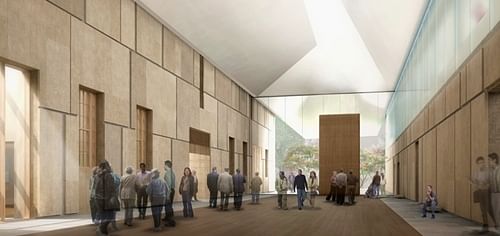
The recent article in Architectural Record about the respectable energy targets for the new Barnes Museum design by Tod Williams Billie Tsien Architects raises an issue that sparks further discussion. By now, the strategies for reducing energy use in offices and residential projects are mostly general knowledge, net zero projects are becoming more commonplace and the market is flooded with media covering the relevant issues. However, there is still little talk about how to reduce energy in the ‘difficult’ typologies: Museums, hospitals, laboratories to name the ‘heavy hitters’. These typologies have thus far been mostly exempt from scrutiny because their environmental needs have been deemed too specialized for drastic change. Museums have specific light and humidity requirements to both preserve and view art properly. Hospitals have the obvious concern for contaminants and the health of susceptible members of society and thus have strict ventilation and thermal requirements. However, if these typologies are going to meet future carbon emission and energy use targets, they must reinvent themselves.
The problem in the contemporary manifestation of most hospitals and museums is that they are a product of their architectural origins: Both the museum and the hospital originate from buildings initially designed for other uses. Museums were usually housed in palaces and hospitals in monasteries. The architectural development of both typologies was greatly influenced by the features of these original homes. Endless hallways of rooms arranged along linear corridors so common in the modern hospital is a feature that can be tied back to the monasteries that housed the first ‘hospitals’ of Europe. Even todays purpose built museums have DNA markers that match their ancestors.

Great Ormond Street Hospital by Llewelyn Davies Yeang
As two of the oldest building typologies that were around well before electricity or mechanical ventilation, there should be some kind of inherent smartness in these typologies. And yet, they are two of the highest energy consumers and are the most resistant to change. I am not suggesting we scrap the technological advances of the past 100 years, but rather remember the lessons of passive design. As proven by hospital projects such as The Great Ormond Street Children’s Hospital and Williams and Tsien’s Barnes Museum, these typologies can successfully incorporate daylight, natural ventilation and other passive strategies without jeopardizing - and probably improving - environmental quality. The excuses commonly accepted as reasons for high energy use in 'difficult' typologies have never been legitimate, but with projects like these setting the example of what is possible, there is no longer any excuse for designing and building energy intensive projects.

The Barnes Foundations by Tod Williams Billie Tsein Architects
A discussion on everything to do with sustainable design. From renewable energy to implementing integrated design in professional practice. Case studies, article reviews and green building certification methods and additional resources will all be included.
3 Comments
given that there are passivhaus clinics built in germany, and hospitals designed to meet minergie-p(assivhaus) underway in zuerich and basel - i don't think it's an issue of resistance to change.
though there are regional structural differences that make this possible, e.g. shared hospital rooms...
those examples are still relatively rare and are in Europe, I am more referring to resistance in the US.
i'm just pointing out that examples do exist, there isn't any excuse for new buildings not to invest in efficiency. and considering passivhaus represents a 95% reduction in operational costs compared to a 'normal' hospital - the investment pays for itself relatively quickly.
Block this user
Are you sure you want to block this user and hide all related comments throughout the site?
Archinect
This is your first comment on Archinect. Your comment will be visible once approved.